This is the story of the Dutch conquest of Fort San Salvador and the Spanish town La Sanctissima Trinida ( current day Keelung) in the year 1642 as described by P.A. Leupe in his work “DE VEROVERING VAN HET FORT: LA SANCTISSIMA TRINIDADE, OP FORMOSA, IN 1642″.
In his work he both uses descriptions as well as letters from historical Dutch documents to describe what happened in the days leading up to, during and after the conquest of Keelung.
note: the names La Sanctissima Trinidade, San salvador, Quelang are used in various ways in historical sources. It depends on the source used (Dutch, Spanish or Chinese) which names are used. There is the Fort, the bay, and the city next to the bay.
I shall use the words, Bay, Fort or City before the name to indicate which location I refer to.
Table of Contents
Historical background
In 1624 the Dutch settled in Southern Taiwan on a peninsula called Taijouan near the Formosan coast. Soon after they started construction of a fort, called Fort Zeelandia.
Fort Zeelandia proved to be on a great location to trade and soon became very prosperous. Not only due their trade position between China, the Philippine islands and Japan but also because the island Formosa had plenty of resources and fertile lands.
Soon after the Dutch founded Zeelandia in southern Taiwan, the Spanish established a base in Northern Taiwan in order to protect trade from the Philippines (a Spanish colony at the time) from the Dutch. Already in 1631 the Dutch governor scouted Northern Taiwan and recognized the threat on Dutch trade intentions posed by the Spanish. A second motive to take northern Taiwan of the Spanish was the pressure of Japan government officials. The Spanish had tried to send missionaries to Japan in order to spread Christianity. The Japanese were absolutely against it and wanted the Spanish removed. A third and final motive were the rumors of gold deposits in the northern Formosa area which could earn the VOC a profit.
At the time it was normal to inform the other party their intentions, so in 1641 Dutch governor Paulus Traudenius informed the Spanish governor Gonsalo Portilis of his intentions to take the Spanish forts. The Spanish Governor dismissed the message and was ready for a fight.
In 1941 a Dutch army, together with about 500 aboriginals sieged the fort. Even though the Dutch had a numerical advantage they did not have enough canons to besiege the Spanish. The Dutch decided to disengage, but before leaving, burned down the surrounding villages.
Even though the Spanish had defended the fort, the Dutch had destroyed the Spaniards’ military reputation in front of the aboriginal tribes. It became much more difficult for the Spanish to persuade the aborigines to cooperate.
Soon later the Spanish Governor of Manilla (Philippines) ordered a large number of Spanish soldiers from Formosa to come to Manilla. When the Dutch found out the Fort in Keelung was ill- defended. A second attack on the fort was planned in 1642.
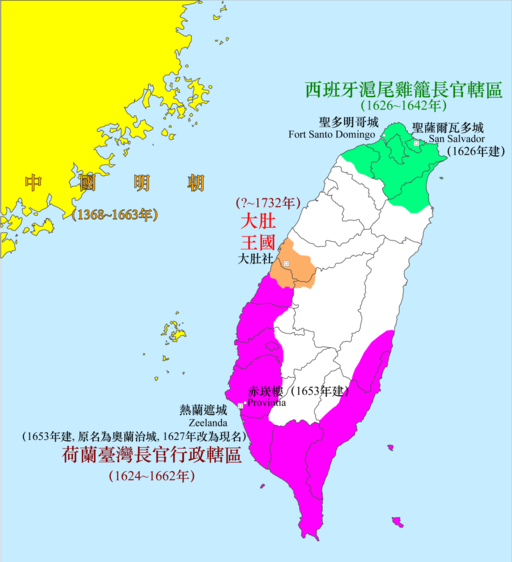
The Dutch conquest of Spanish Formosa
In 1641 the decision was made in Batavia (the VOC capital in the west-indies) to send another military expedition to try and conquer northern Formosa the next year. This time Commandeur- Veldoverste Johan Lamotius Henrick, a renowned Commander who had proved himself in the field, was appointed to take command.
To give you an idea about the area around the harbor and the Spanish fortifications I would like to share a map to you of Keelung, the Taipei basin area and Tamsui made a decade later in 1654 by a Dutch cartographer. This map is the oldest map known of the Taipei area. In the left corner of the Map we see what now is called He-ping island with a small village, a church, the Fort and a road going to a redoubt on top of the hill. On the other side of the bay there is another village with to 2 monasteries on each side. It is known that the Spanish tried to convert the locals to the Christian faith. These were both used as school and to spread faith.
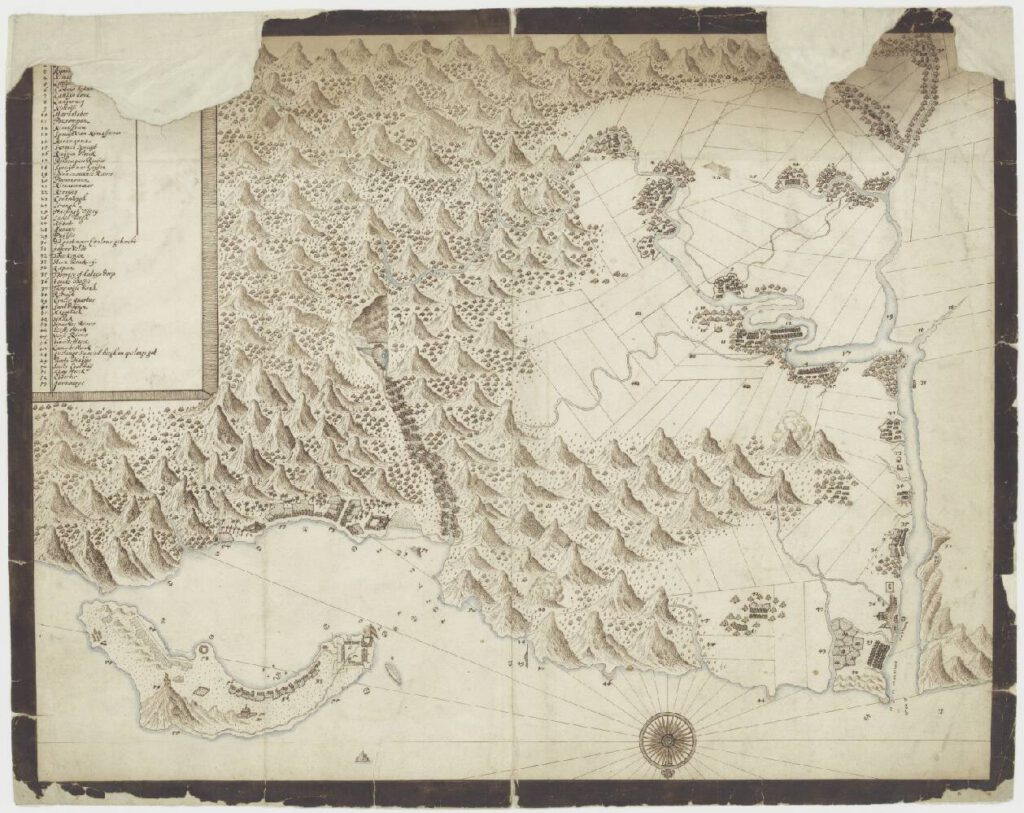
Instruction for Capiteijn-Commandeur Henrick Harrousee to blockade or land at the Spanish Fortress in Keelung
Dutch governor Paulus Traudenius wrote an Instruction for Captain Henrick Harrousee for his mission in Keelung
Henrick Harrousee was to go ahead and move to Keelung. From there he should blockade the port or make a landing depending on what resistance he would meet.
The ships and troops Captain Hendrick Harrousee had for his mission to Keelung:
| ship name | military | sailors | Chinese | Javanen | Quinammers | slaves |
|---|---|---|---|---|---|---|
| Wijdenes | 62 | 47 | 4 | ? | 10 | “ |
| santvoort | 61 | 45 | 8 | ? | 4 | “ |
| Kieviet | 63 | 36 | 4 | ? | 8 | “ |
| Waeterhondt | 61 | 49 | 8 | ? | 8 | 8 |
| Waeckende boeij | 40 | 19 | “ | ? | “ | “ |
| Goed Fortuijn (Jonquen) | 38 | 8 | 12 | ? | “ | “ |
| Goede hoope (Jonquen) | 38 | 8 | 12 | ? | “ | “ |
| De groote lootsboot | 6 | 10 | “ | ? | “ | “ |
| total | 369 | 222 | 48 | 13 | 30 | 8 |
Diary of the attack on Fort La Sanctissima Trinida
Around the 17th of august 1942 the fleet of captain Hendrick Harouse left from Fort Zeelandia to Kelang (Quelangh) current day called Keelung. This is the written diary of the conquest sent to Governor Paulus Traudenius written by the ‘Council of Quelangh’ (Captain Hendrick Harouse et al.)
The attack
On the 21st of August, about four ‘o clock in the afternoon we arrived at the northeastern side of the island Quelang. Some canon shots were fired from the enemy redoubt at sight of us. Hitting none of the ships but “De waeterhont” which was hit by three of the shots killing the second mate.
We used used one Junk, and the groote Lootsbooth {1} to land the military on the best spot we could find between the cliffs. Initial fighting was heavy, killing 2 and wounding 7 of us as the ‘specken’ {2;Spaniards} bravely fought with muskets from the mountain and cliff sides.
Despite the enemy and the terrain, we managed to set our battalion in place, under protection of an overhanging very steep mountain. And our men marched against it which such courage that the enemy fled when they saw us coming. We continued our road to victory until we approached the top of the Quelangh mountain.
Here we found the popes with their cross. They believed no heretics could pass. But as we charged with Muskets, they fled towards their Redoubt. Leaving one behind: a wounded Spaniard. Under promise and threat he told us that no more than 100 white men and 150 Panpangers (most likely Philippines mercenaries) would face us first, then 80 more in the large fort. We took notice and shortly after he passed away… On top of the mountain we placed our banner at nightfall…
Early morning August 22nd, the weather was exceptionally good, we started building an artillery battery and shipped all cannons an ammunition over from our ships to the land.
After we greeted the enemy with a charge of our musketeers in the morning. They replied with shots from the 4 cannons which were placed on top of their strong redoubt as well as musketeers moving on top, thus resulting in a couple of our men getting wounded.
Even though we put the Junk “de Goede Fortuijne” and the groote loodsboot to guard the exit of the harbor. The day before 3 Chinese Junks which were in the harbor managed to sail away. Helmsman Simon Cornelisz. tried to chase them but they could all escape.
Another Chinese Junk tried to escape during the night but this time we managed to capture it. We took prison 37 Chinese and some wheat and Rice which we all kept.
The rest of the day the enemy tried to shoot at us with both cannons and muskets. We sometimes charged back, but most men were put in charge to move 2 halve Kartouwen {3; type of canon} from the ships to the top of the mountain so we could complete the battery.
In the next morning, August 23rd we started to shell the redoubt shooting over 100 shots creating a breach in one point of the structure. Lieutenant Boon and Lieutenant Johannes Burgers accompanied with 35 soldiers went closely to spy on the structure and possible moats or other defensive structures so we could plan an attack in the night or next morning.
When they approached the structure it was quiet, no shots were fired and no enemy sighted. The brave decision was made to climb into the breach and plant the Dutch flag. We found 3 dead and 2 survivors of which 1 was wounded.
We got under fire from the large fort as several cannon and musket shots were fired at us. Our defenses were under threat and an extra company of soldiers was sent as reinforcement leaving enough men in the main army.
August 24th, 1642
It was around 4′ o clock in the afternoon when it started to rain very much, so we could not do much anymore. Instead we decided to sent a message to the large fort to claim the fortress and ask the enemy to surrender. The Spanish Governor Goncalo Portillo accepted the message and asked for a respite until the next day so he could discuss the matter with his officers.
We granted him the time but demanded an answer by sunrise the very next day.
August 25th, 1642
Early Morning we received a letter from the Spanish with the following:
- The Governor and all his people are allowed to leave, with arms and goods.
- No prisoners would be made by the dutch and they were all allowed to leave to Manillha on a ship.
We declined these terms and replied with our own terms, as was written by Commander Pieter Baeck and discussed
August 26, 1642 .
Our armies came together in-between the large and the little fort. And agreed on the terms
And on August 26, in the afternoon, we entered the Large fort with 4 of our army companies. Each Company settled on one of the 4 bastions (which are quite large). There were no Spanish soldiers present in the fort as we all had led them away to the monastery St. Domingo, as agreed so in our agreement.
{1} ‘groote lootsboot’, I couldn’t really find any source of what a loodsboot exactly is. But what I can do is to do an educated guess based on the modern day Dutch word for ‘loods’. Meaning: A Captain/specialist who helps other Captains of larger ships with advise and guide them through local local waters (or into ports).
I can imagine that for a 17th century large sailing ship it is not easy to be able to enter port or come close to shore and thus a piloting ship would be needed to guide them in or to help transfer goods and men from the ship to the shore.
I also can imagine that a ‘groote loodsboot’ (large pilotingship) would be needed in order to perform a military landing, especially when the landing area were shallow waters with many rocks and cliffs. You wouldn’t risk a regular sailing ship to do such a thing.
{2} ‘specken’, a thin, slim person, it was used especially as an insulting nickname for Spanish soldiers, who were considered extremely hungry.
{3} ‘Cartouw’: type of cast-iron or bronze cannon with a short barrel, a ‘heel Kartouw’ is a cannon suitable for 48 pound cannonballs. A ‘ half Kartouw’ uses 24 pound cannonballs.
Half Kartouw were often used on campaigns, expeditions, fort defenses or as ship cannons.
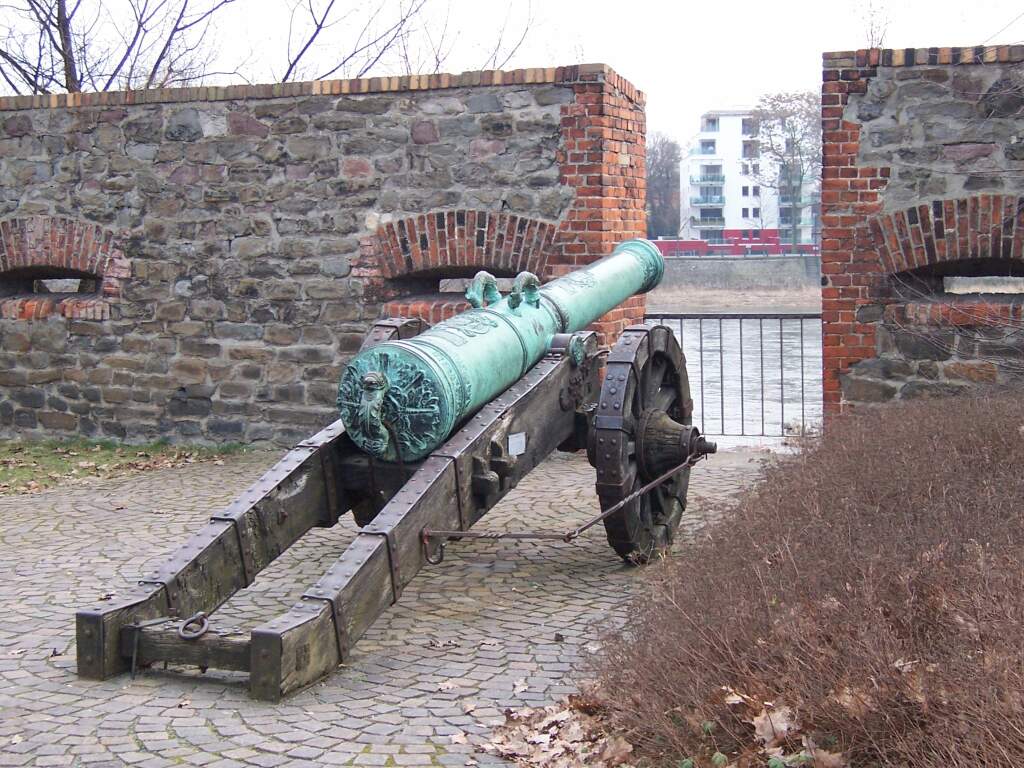
[2] image credit, example cannon type: Halve cartouw.
Conditions of surrender
Knowing he was outnumbered and did not have the supplies and resources to last long the Spanish Gouvernor Gonzalo Portille agreed the following terms of surrender with the Dutch Captain-Commander Hendrick Harouse:
- The Spanish governor and the Spanish soldiers need to leave the fort and move to the monastery. There they will put down their weapons.
- They shall not wear more than one or two packs of clothes.
- The clerics also shall leave, taking nothing but the clothes they wear.
- Everyone shall stay at the monastery until further notice
- They will be sent to Taijouan, and once there the governor of Batavia, Gouverneur-Generael Antonio van Diemen will decide what will happen next
The loot
When the Dutch took over the fort they sealed all the chests in the fort’s warehouse and noted the ammunition left behind. They found:
- 15,000 to 16,000 𝔊 gunpowder; 𝔊 refers probably Dutch: ‘grein’ or English: ‘grain’, (still to be verified)
- A large batch of bullets
- 5 clappers fuse (clapper = measure of fuse, I cannot not determine how much exactly)
- 9650 Spanish Reals of 8
- batches of (church) silver
- some packages of ‘Lijwaet’ (Linen)
Aftermath
Dutch governor Paulus Traudenius also wrote an Instruction for Commandeur- Veldoverste Johan Lamotius Henrick, but by the time he arrived at Fort Zeelandia the message had already come a few days earlier that the Spanish fort has been taken. Nevertheless Johan Lamotius Henrick sailed to Keelung to assist. Also one of his ships immediately was dispatched to Japan to inform them the joyful news the Spaniards were gone!
The Spanish soldiers were taken to Batavia, and from there released on ships towards Spanish ports. The Spanish governor scared of loosing his head, moved with his family to one of the settlements in Eastern India. What happened after I could not find in Dutch sources.
What’s left of Fort San Salvador?
So we cannot leave without wondering, are there any traces left of the Spanish and Dutch fortifications at Keelung?
The location of the fort
The approximate location of the Fort lies under what is now a Taiwanese shipbuilding company.
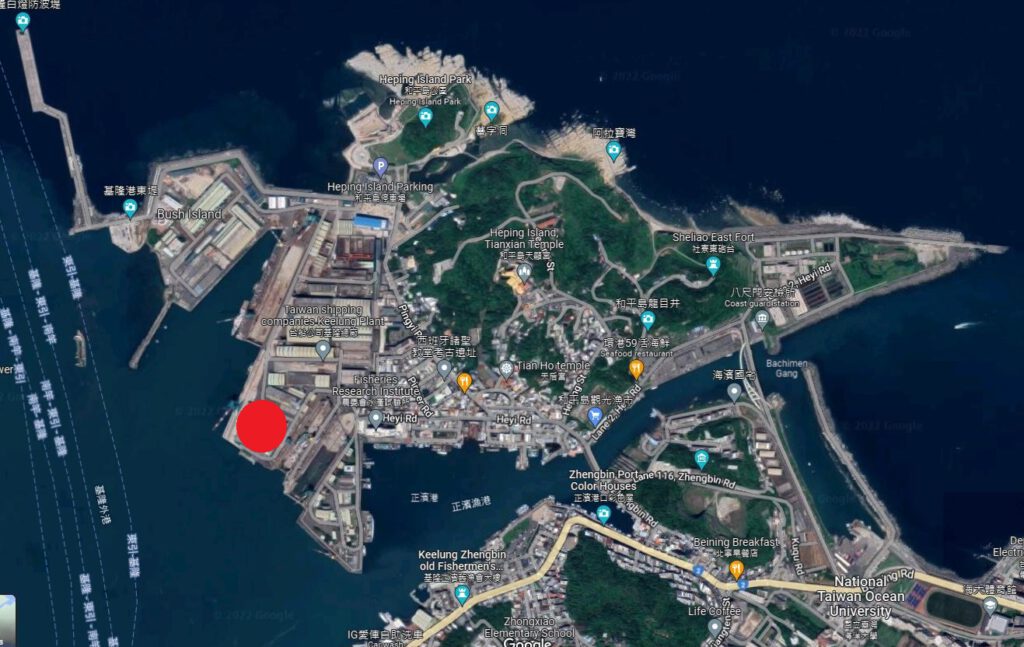
The last time the archeologic remains of the Spanish fort in Keelung were seen was during Japanese rule of Taiwan. Afterwards the Harbor was developed rapidly and now the remains are buried under the foundation of a Taiwanese shipbuilding company. Quite recently however the area is scanned with ground penetrating radar and the exact location of the fort foundations are pinpointed.
sources: san salvador, GPR
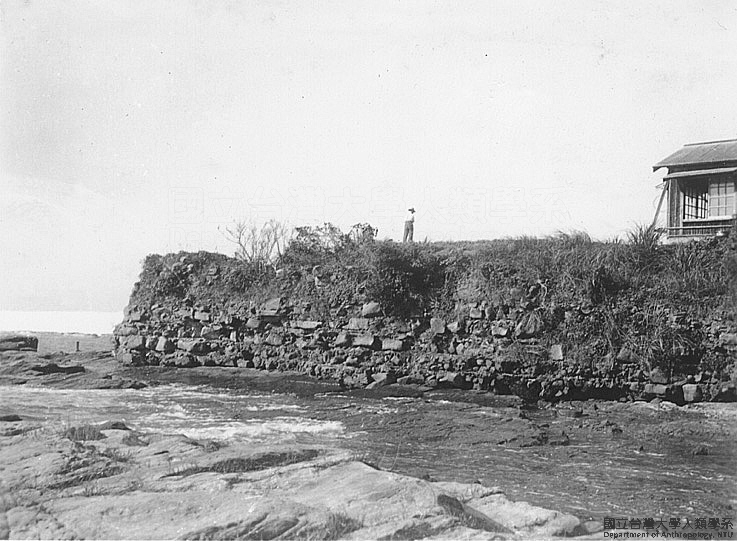
Archeologic remains of a Spanish Church in Keelung.
In 2014 an archeology team uncovered the foundations of a Spanish church under a parking lot on Heping island. A Taiwanese and a Spanish team worked carefully together to uncover the history buried beneath the parking lot.
During the dig 3 corners of the chapel were uncovered as well as the skeleton remains of 2 male figures buried in the same time period. The material of the foundation matched rocks found in nearby hills, indicating the Spanish used local materials to build it.
Quite interestingly the location corresponded with positions shown on early 17th century maps.
Not only Spanish era objects were found: digging further the team also found traces of objects dating back over 2,500-3,000 years ago such as jade, stone tools and pottery pieces. This indicates Heping island was visited by people for a long time in history
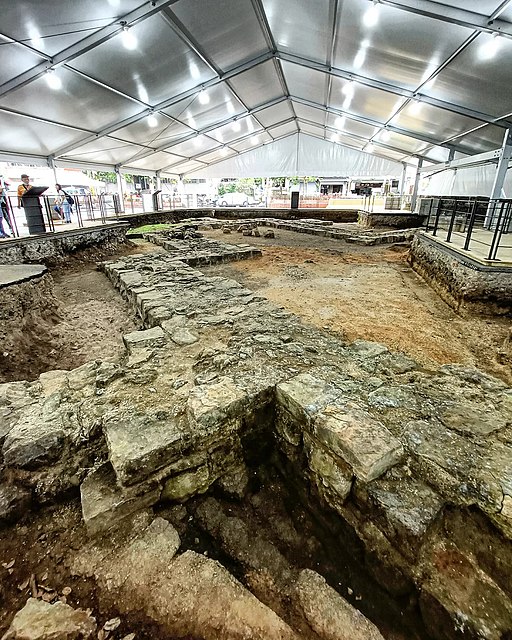
[3] image credit
How did Fort Salvador in Keelung look like?
The question now remains is, what exactly did Fort Salvador look like? Well, for this we have several sources. At first we have the drawings made by the Dutch: there are some maps with the fort depicted, some texts describing how it looked but also there is a map with the exact dimensions of the fort: In 3 corners of the fort there are pointy bastions, the other side (pointed to the inner bay) had a squared corner. On the one side facing the water is the ‘waterpoort’ e.g. the watergate. On the innerside there is the ‘landtpoort’ or landgate this side was connected to a road towards the small town, church and other buildings on Heping island. The so to speak ‘land oriented side’ of the fort had a defensive trench in front of it.
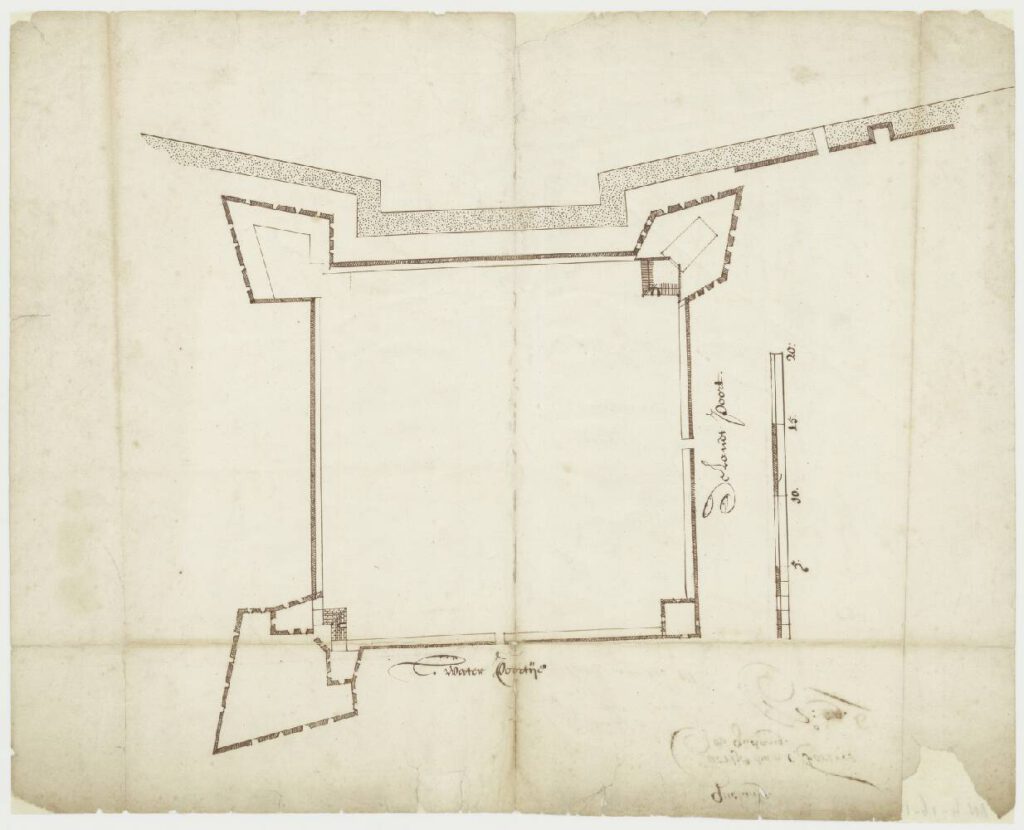
But there are also other sources we could look at. When the foundations of the Spanish church were excavated we saw the big stone foundations. It is highly likely that the fort was made from the same material.
Also looking at Spanish Forts from the same era which still exists we can notice similar features. One great example we find then is the Fort of Taytay (Santa Isabel), in Palawan (Philippines). originally built as wooden palisade structure in 1667 and later rebuilt in 1738 into a stone structure.
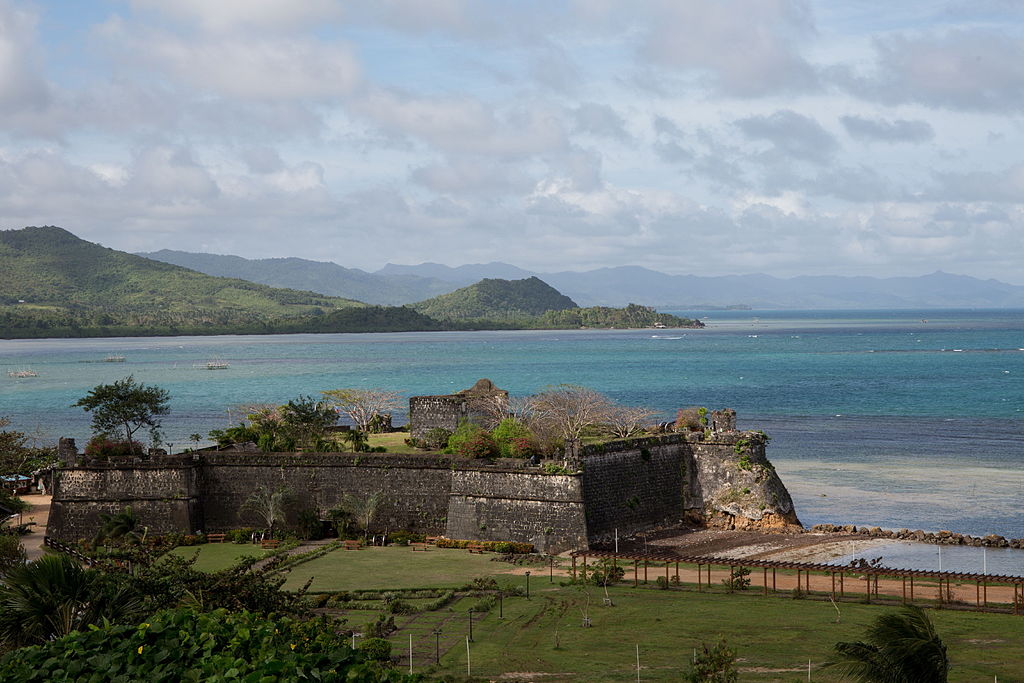
Personal Remarks
I tried my best to make a direct translation of the texts from 17th century Dutch, to regular Dutch to English. Nevertheless it is could quite possible be that some nuances or details got lost in my translation. Down below I state my references, so for a more deep dive into the sources you can click the links below.
References
Books, online literature and images I used for this article.
Literature
The main source for this article is :De verovering van het fort La Sanctissima Trinidade, op formosa , in 1642. written by P.A. Leupe
Images
[1] 郁帝 at Chinese Wikipedia, Public domain, via Wikimedia Commons
[2] Kartauw, Public domain, via Wikimedia Commons
[3] Mrmarkertw, CC BY-SA 4.0, via Wikimedia Commons
[4] Christian Pirkl, CC BY-SA 4.0, via Wikimedia Commons

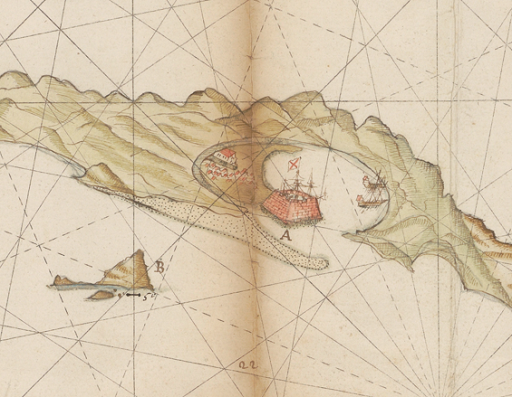
Some notes on this event…
During the years in which the Spanish had established themselves in the north of the island, Spain intensified its trade with China and continued to expand its northern settlements. However, in 1537 the new Governor General of the Philippines, (from which the Formosa settlement depended) Sebastián Hurtado de Corcuera, was very critical of the Formosa enterprise: the Japanese threat no longer existed because in this Edo period the island was facing isolation, and the constant confrontation with the Dutch was consuming too many resources that he rather dedicate to other fronts.
Portillo the last governor, died in Batavia under very unhealthy conditions of imprisonment, (never of fear about losing his head) before being able to return to Philippines or Spain. Hurtado was blamed for the loss of the Spanish part of the island, tried and sentenced to five years in prison.
For the Spanish settlement remains, you can see the very well-preserved Fort of Santo Domingo, built in 1628 in the town of Tamsui, dismantled and rebuilt by the Dutch.
This information can be found in http://homepage.ntu.edu.tw/~borao/2Profesores/Paper%20Macao%20Overview.pdf.
More sources here https://es.wikipedia.org/wiki/Gobernaci%C3%B3n_de_Formosa_espa%C3%B1ola#cite_note-24
Thank you Juan for your additional information. Very interesting to hear more about the historical background about what happened, especially from Spanish sources instead of the Dutch sources I mainly use.